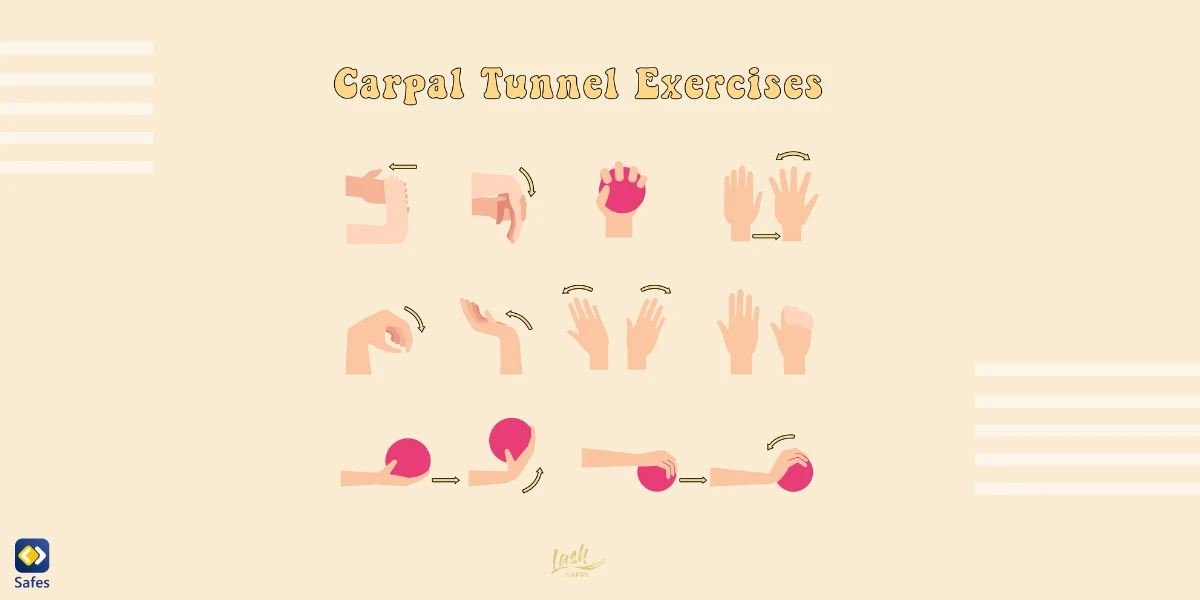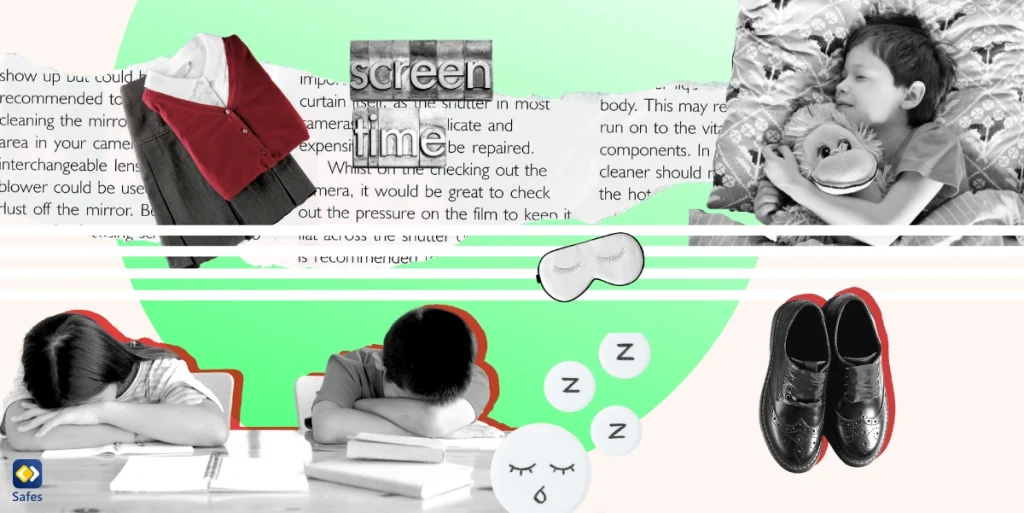Carpal tunnel syndrome is a condition affecting millions of people each year, kids included. One reason this condition is becoming common is because children are spending more and more time on screens. It’s so important to start taking steps to prevent it now before it becomes a problem for your child. That’s why in this blog post, we’ll discuss some easy strategies for carpal tunnel prevention that you can start using today to protect our kids’ hands.
Download and Start Your Free Trial of the Safes Parental Control App
Understanding Carpal Tunnel Syndrome
Before explaining how to prevent carpal tunnel syndrome, first, we have to understand what it looks like in kids of different ages. Carpal tunnel syndrome is a condition that affects the wrist and hand, causing numbness, tingling, and weakness. It occurs when the median nerve, which runs from the forearm to the hand through a narrow passageway called the carpal tunnel, becomes compressed or irritated.
Carpal tunnel syndrome can be caused by factors like repetitive hand and wrist movements, poor posture, and even genetic predisposition. For tweens, excessive screen time and improper use of electronic devices are often the culprits.
If left unaddressed, this condition can have long-term implications, such as reduced hand strength and dexterity, as well as chronic pain.

The Connection Between Excessive Screen Time and Carpal Tunnel Syndrome
If you wonder how to tell if your kid is at risk for carpal tunnel syndrome, their screen time is the tell-tale indication. With the rise of technology, kids, tweens, and teens are spending more time than ever before on devices like smartphones, tablets, and laptops. Too much screen time _especially in a fixed position_ can lead to hand and wrist strain, which is a major risk factor for carpal tunnel syndrome.
Repetitive motion is another factor to look for. When your child spends hours scrolling through social media or playing video games, their hands and wrists perform the same motions over and over again. Poor ergonomic practices, such as typing on a laptop with their wrists at an awkward angle, can also put them at risk.
The bottom line is that excessive screen time can increase the risk of carpal tunnel syndrome in children. So, it’s important to be aware of the potential long-term implications of too much screen time and take steps to prevent carpal tunnel syndrome.
Preventing Carpal Tunnel Syndrome
One way to protect your child’s hands from the dangers of excessive screen time, which is the main culprit in carpal tunnel syndrome, is by promoting regular breaks and physical activity to reduce prolonged screen time. Encourage your little one to take a break every hour and do some physical activities such as stretching or walking around.
It’s also essential to ensure that your child’s hands and wrists are in the correct position while using devices. Provide ergonomic tips such as keeping the wrists straight and elbows at a 90-degree angle and avoiding excessive force when typing or using the mouse.
Finally, encourage alternative activities that promote hand strength and flexibility, such as playing musical instruments, drawing, or knitting. Following these strategies, you can help prevent carpal tunnel syndrome and keep your child’s hands healthy and strong.

Identifying Early Signs and Seeking Treatment
It’s important to be aware of early warning signs of carpal tunnel syndrome, so you can take action before it gets worse. But how to test for carpal tunnel? Here are what to look out for:
- Hand and wrist pain
- Numbness or tingling in the hand or fingers
- A weak grip
- Difficulty performing fine motor tasks such as writing or typing
If your kid complains of any of these symptoms, it’s important to seek medical advice immediately. Don’t wait until it’s too late. Early intervention is key to preventing further progression and reducing the likelihood of long-term complications. Talk to your healthcare professional about diagnosis and treatment options for your child.
Creating a Healthy Screen Time Balance
While it’s important to limit kids’ screen time, it’s equally important to encourage a balanced lifestyle that includes physical activity, hobbies, and social interaction. Here are some tips to help you get started:
- Set clear limits: Establish clear rules around screen time and stick to them. Set a daily time limit or designate certain times of the day as screen-free.
- Encourage physical activity: Encourage your kiddo to do some physical activity. Any physical activity is fine, including anything from taking a walk to joining a sports team.
- Promote hobbies: Inspire your kid to take up hobbies and interests that don’t require a screen, like painting or playing an instrument.
- Prioritize social interaction: Encourage your child to spend time with friends and family. You can organize playdates or family outings.
Remember, creating a healthy screen time balance is all about finding a balance that works for your family. Setting clear limits and promoting a balanced lifestyle can help your child develop healthy habits that will last a lifetime.

How Can Safes Help Control Your Kid’s Screen Time?
Worried about your child’s excessive screen time causing carpal tunnel syndrome? Don’t worry; we’ve got a solution for you. The Safes parental control app is a great way to monitor and control your child’s screen time. With Safes, you can set limits on screen time and set screen time intervals. These features can help your kid avoid carpal tunnel syndrome by ensuring that they take frequent breaks and do screen-free activities.
So, if you want to keep your child healthy and safe, try Safes with a free trial! It’s available on all platforms, including Android, iOS, Windows, and Mac. Use the following links to learn how to put parental controls using Safes:
- Windows parental controls
- Macbook parental controls
- Parental Controls on Android
- iPhone parental controls
Carpal Tunnel Prevention Strategies: Conclusion
Carpal tunnel prevention is crucial to ensure that kids, tweens, and teens don’t suffer from the consequences of excessive screen time. Understanding the causes and long-term implications of carpal tunnel syndrome helps us take active steps to prevent it from occurring in the first place.
Encourage regular breaks, provide ergonomic tips, and promote alternative activities to keep your kid healthy. You can also put parental controls with apps like Safes to monitor and control your child’s screen time, which can ultimately contribute to carpal tunnel prevention.
Remember, early intervention is key, so don’t wait until the symptoms of carpal tunnel syndrome show up.
Your Child’s Online Safety Starts Here
Every parent today needs a solution to manage screen time and keep their child safe online.
Without the right tools, digital risks and excessive screen time can impact children's well-being. Safes helps parents set healthy boundaries, monitor activity, and protect kids from online dangers—all with an easy-to-use app.
Take control of your child’s digital world. Learn more about Safes or download the app to start your free trial today!




